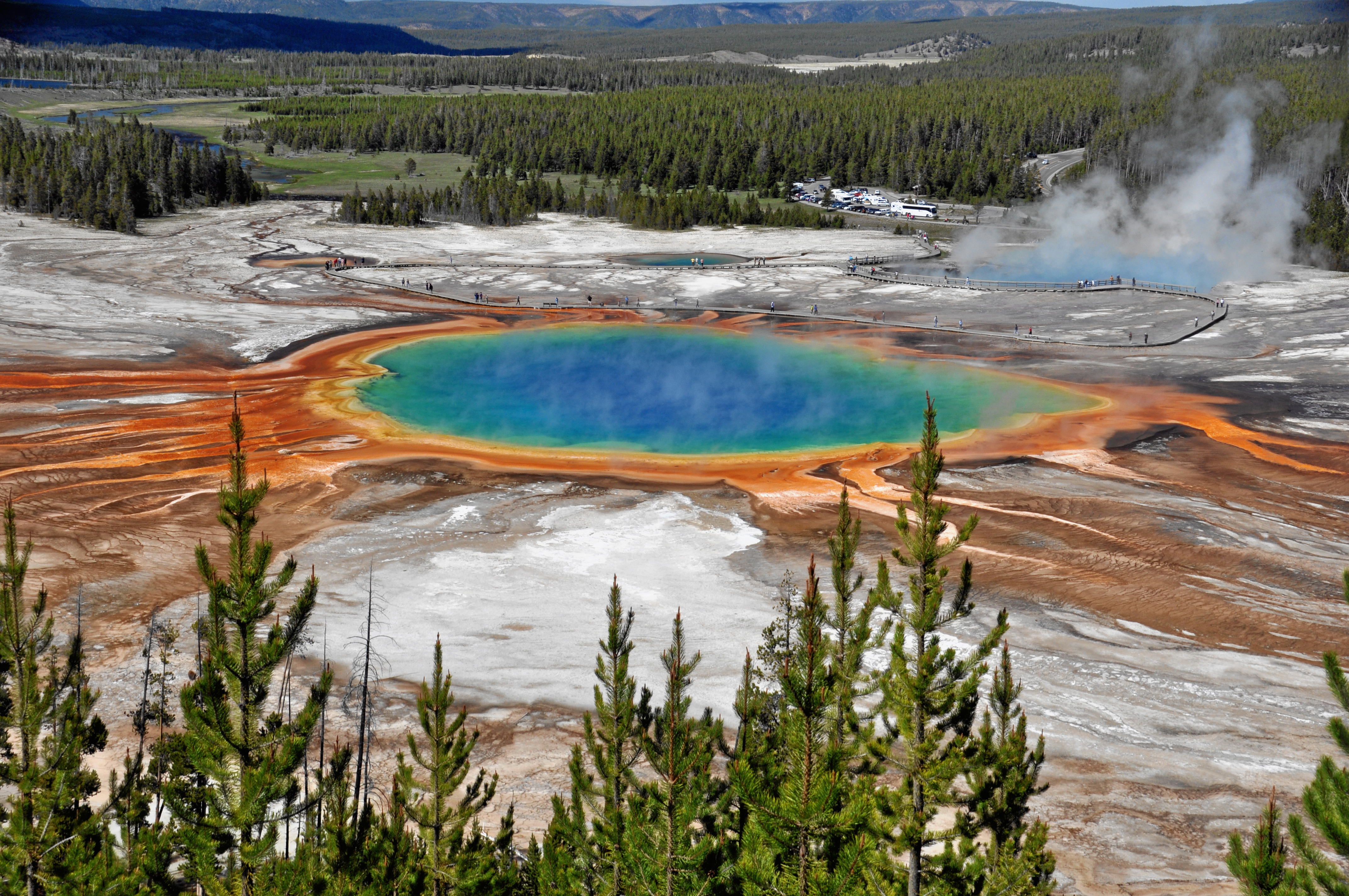Yellowstone National Park, established in 1872, is renowned as the first national park in the world. Located primarily in the U.S. state of Wyoming and extending into Montana and Idaho, the park is famous for its diverse geothermal features and abundant wildlife. Its founding marked a pioneering moment in conservation history, serving as a model for national parks worldwide and highlighting the importance of preserving natural wonders.
Cultural significance is represented by its roots in Native American history, with archaeological sites indicating human presence for at least 11,000 years. The park's landscapes and ecosystems are a vital part of indigenous heritage, emphasizing the blend of culture and nature. Notable landmarks include the Old Faithful geyser, the Grand Prismatic Spring, and the Yellowstone Grand Canyon, each offering unique geological insights and breathtaking views.
Geographically, Yellowstone is situated on the Yellowstone Plateau, surrounded by the Rocky Mountains. Its climate varies, with cold, snowy winters and moderate, warm summers. The park's elevation influences weather patterns, making it a diverse environment for both plant and animal species, including bison, grizzlies, and wolves.
Yellowstone's geothermal features are its most unique attributes, housing the highest concentration of geysers in the world, including the iconic Old Faithful. The park is positioned over a volcanic hotspot, which fuels these thermal phenomena and contributes to its dynamic ecosystem.
One of the famous events associated with Yellowstone is its annual winter festival, which showcases activities like snowshoeing, wildlife photography, and educational programs focused on winter ecology. These events celebrate the park's natural beauty during the stark winter months, emphasizing conservation and awareness.
Interesting facts about Yellowstone include its own 'supervolcano,' the Yellowstone Caldera, which is one of the largest active volcanic systems in the world. Despite its geological volatility, the park continues to be a symbol of natural beauty and ecological diversity. Today, Yellowstone National Park is not only a natural treasure but also a testament to the enduring importance of environmental stewardship.
 James St. John from Newark, Ohio, CC BY 2.0, via Wikimedia Commons
James St. John from Newark, Ohio, CC BY 2.0, via Wikimedia CommonsUnited StatesNorth America
Nearby Places
Log in to write a review.
Sustainable Travel Tips
Plan Mindfully
- Choose direct flights when possible
- Travel during off-peak seasons
- Pack light and bring reusables
- Prefer eco-friendly accommodations
At Your Destination
- Use public transport or walk
- Support local businesses
- Respect wildlife and habitats
- Choose activities with minimal impact
Daily Habits
- Reuse hotel towels
- Take shorter showers
- Turn off lights/AC when out
- Carry a reusable water bottle
